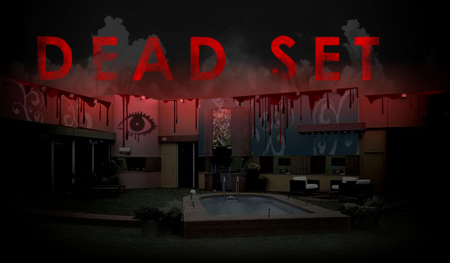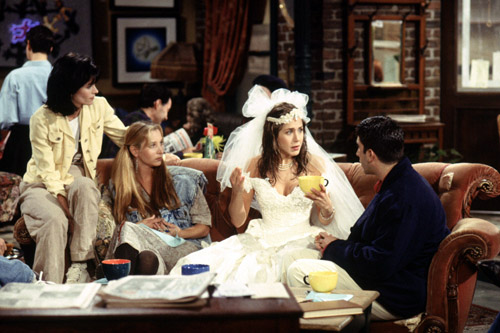August 14th 2015 archive
The evolution of televisual systems and social media has not only transformed the way we engage with content, but also the social relations that exist between audiences. Instead of watching and discussing the grossing program with the family, viewers are taking to social media to start the online discussion live as events unfold. For the purpose of this blog, I will be discussing the how the social experience relative to broadcast television has changed, in particular, how scheduling and the proliferation of social media has shaped how we interact with fellow viewers of a program.
Historically, watching television was primarily a social and family-oriented event or experience. We all know the image of the typical white middle-class family spending some quality time together as they sit mesmerised in front of their one-and-only television set. While this image may seem out-dated, it still holds relevance in society today. So what is it about television that makes it such a socially unifying resource?
 Image source: smartcarleen.com
Image source: smartcarleen.com
Television programs are scheduled strategically to reach their target audience at a time when it suits them. For example, in the evenings it is assumed that children and parents have returned from school and work respectively, and wish to wind down with some family friendly programs. This effectively brings the family together as the programs are timed to suit their lifestyles and also usually their mutual interests. Consider singing competition show, The Voice – one of those programs that everyone can get sucked into. Typically, watching The Voice with family or friends is a more fulfilling viewing experience than watching alone as we can commentate our thoughts and feelings on the program to those around us. For example…
“I can’t believe he or she got through to the battle rounds with that song choice!”
“OMG, I know right?”
While this remains a familiar scenario in some homes, social television has taken on new meaning with the recent proliferation of the Internet. For one thing, increased television ownership enables family members to call dibs on a TV to themselves (Singer 2010). Consequently, instead of communicating with the family, they instead take to social media via a second screen to participate actively in the live discussion with equally passionate strangers (Ingrey 2014). When The Voice is on TV for instance, Twitter and Facebook blow up as people engage with others in the viewing community about the happenings of the show.



Even if watching on their lonesome, scheduling reassures viewers that someone else in the world has watched it ‘alongside them.’ If they need to vent about whether or not ‘so and so’ deserved to win that battle, it is more than likely that someone in the viewing community will share their frustration at that moment. The imagined community – a perceived community, culture or nation of viewers – becomes more real as viewers can see the comments flood in live as the show is broadcasted (Anderson 2006). This reinforces feelings of belonging and community to viewers, resulting in a (mostly) positive social experience, albeit online.
It is interesting to note how scheduling can have such impact over our own viewing habits and behaviours, as well as how we subsequently interact with others.
REFERENCES:
Anderson, Benedict, 2006, ‘Introduction’ in Imagined Communities: Reflections on the Origin and Spread of Nationalism, Verso, London, p.6
Ingrey, Melanie, 2014, ‘Triple Screening: A New Phenomenon,’ weblog post, 23 February, Nielsen Insights, viewed 10 August 2015, < http://www.nielsen.com/au/en/insights/news/2014/triple-screening-a-new-phenomenon.html>
Singer, Melissa, 2010, ‘Televisions are breeding faster than Australian households,’ The Sydney Morning Herald, July 19, viewed 9 August < http://www.smh.com.au/digital-life/hometech/televisions-are-breeding-faster-than-australian-households-20100718-10g3k.html>
Dead Set is a horror/drama mini series in which a zombie apocalypse leaves the Big Brother housemates as the only remaining survivors. Sound ridiculous? Sure. But it is a clever concept created by British broadcaster Charlie Brooker. As an avid zombie fan himself, he believes “every person in the country must’ve fantasised at some point about what would happen if some terrible apocalypse occurred during a run of Big Brother (2008).” Dead Set follows protagonist Kelly, a worker on the fictional program, who manages to save herself and seek refuge in the house of oblivion.

Image source: andykinsella.com
The show can be read in a variety of ways, but in this blog I wish to focus on the way it represents the relationship between reality TV, its producers and its viewers. While Brooker claims that the series is “primarily a romp,” he encourages audiences to be the judge for themselves. The show spoke to me as a critique against reality TV and its creators, but predominantly the culture and following behind the genre itself.
The first episode in the series begins with housemate Joplin questioning the attraction and merit of television shows like Big Brother in our society. From the get go we are thus led to question how reality TV influences us, and why are audiences are so besotted by it.
According to S. Shyam Sundar – professor of communications and co-director of the Media Effects Research Laboratory at Penn State University Park – reality TV is “much more seductive [than other types of programming] because it seems much more real, much less orchestrated (McDermott 2012).” While this is true to some extent, it is widely recognised today that reality TV is typically not a true representation of ‘the real.’ Dead Set highlights this as Kelly doubts her new job: “the show and the crowds and everything, it’s not really real is it?” This comment encourages viewers to think past what we see on screen and question the validity of what is labelled as “reality.”
To elaborate, reality TV is universally recognised as ‘trash.’ Big Brother of all shows is perhaps the epitome of this, thus making it the obvious choice of program to use as a basis for critique in Dead Set. Brooker also notes that “all zombie movies eventually boil down to a siege situation,” and the secluded, camera-filled Big Brother house would be an ideal and original setting.
In many ways, the mindless zombies in Dead Set attempt to represent and undermine the viewers of reality television. The show likens reality TV to an infection, taking over the world as it gains popularity and sucking in its victims in one by one. Once people start watching shows like Big Brother, they get addicted and cannot pull themselves away. Note the parallel to out-of-control, brain-dead zombies.
Brooker also draws attention to the flaws of reality TV production as viewers are led to immediately despise the money-hungry, ignorant producers in the fictional run of Big Brother. Presumably (and hopefully) this is an exaggerated version of what goes on behind the scenes, but nonetheless it inclines viewers to question the values and priorities of reality TV production as a whole.
Dead Set definitely leaves you with a lot to think about – from the problems with reality TV, all the way through to how to survive a zombie outbreak. It certainly is an interesting representation of some complex underlying issues of the reality genre, making for a thought provoking watch.
REFERENCES
McDermott, Nicole, 2012, ‘Why we’re obsessed with reality TV,’ Greatist, 11 July, viewed 10 August 2015, <http://greatist.com/happiness/why-were-obsessed-reality-tv>
Brooker, Charlie, 2008, ‘Reality bites,’ The Guardian, 18 October, viewed 11 August 2015, <http://www.theguardian.com/film/2008/oct/18/horror-channel4>
In the previous blog, I examined how a transcript of an episode of Skins compared to a completed episode. So to segue on from that, I wish to compare how a first draft of the pilot episode of Friends, or Friends Like Us as it was originally titled, compares to the fine cut of the episode.
Disclaimer: if you are not a Friends fan you probably won’t be a fan of my blog – chances are it’s going to come up A LOT. You have been warned.
The following document marks history in what is one of the most successful sitcoms of all time:
Friends 1×01 – The One Where Monica Gets a Roommate – SCRIPT

Image Source: Friends Wikia – The Pilot
What is most noteworthy for me is the significant dialogue differences between this early draft and the pilot episode. Conversations are cut short, jokes are removed and replaced, and the characters take on different personas. So what happened between this first draft and the fine cut to result in so much change?
In a large-scale production such as this, the script is under the influence of a lot of creative minds – writers, directors, cast, even audiences. Thus, it is likely to undergo a lot of change before it reaches our screens.
On the official Friends website, a FAQ asked, “What was the life-cycle of the typical show?” In response was the following detailed breakdown of all stages of production (with a particular focus on pre-):

Extensive process, huh?
This indicates the time, effort and collaborative measures that go into script writing. Evidently, it is difficult to ever consider a script as being finished as it remains subject to revision throughout all production stages. In fact, it is not until the TV show or film is released that the script can officially be declared as complete. I think it is important for us as amateur writers/filmmakers to remember that what we write is never set in stone. The role of the script is to essentially guide, but not define, our filmmaking practice.
On a bit of a side note, I would love to one day sit in on a table read of a professional TV show or film, just to see how it all goes down. While I have watched quite a few script read-throughs on Youtube, I have only ever experienced them backwards, i.e. watching them after having seen the film in it’s final form. I think it would be amazing to see the whole process, from all the ideas thrown around to determining which jokes are the funniest, and to eventually see it come to life on film.
 Image source: smartcarleen.com
Image source: smartcarleen.com





